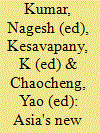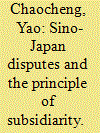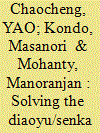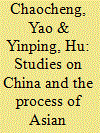|
|
|
Sort Order |
|
|
|
Items / Page
|
|
|
|
|
|
|
| Srl | Item |
| 1 |
ID:
080613


|
|
|
|
|
| Publication |
New Delhi, Research and Information System, 2008.
|
| Description |
xiii, 274p.
|
| Standard Number |
8171220983
|
|
|
|
|
|
|
|
|
|
|
|
Copies: C:1/I:0,R:0,Q:0
Circulation
| Accession# | Call# | Current Location | Status | Policy | Location |
| 052987 | 337.1/KUM 052987 | Main | On Shelf | General | |
|
|
|
|
| 2 |
ID:
092414


|
|
|
|
|
| Publication |
2009.
|
| Summary/Abstract |
Regional economic unification must overcome some economic obstacles, such as how to remove the trade and non-trade barriers, how to realise monetary stability in the region and how to develop a regional market, dominated by internal demand. However, in the long run, social obstacles will be more troublesome than the economic obstacles and could also be counterproductive. The integration process in Asia has been lagging behind the other continents of Europe and North America for many reasons. One of them is that the Asian unification process has mainly been a top-down approach by politicians and leaderships in this region, without wider and broader participation from the societies and civil groups. Nonetheless, there are strong trends favouring the ongoing regional cooperation in Asia. While envisioning bright prospects, the Asian economic integration process, however, is destined to encounter social obstacles. One of them is clearly the Sino-Japan dispute. The article argues, that the principle of subsidiarity (bottom-up approaches) (Horst Rolly 2003) being applied in European unification, may serve as the key solution-and strategic approach-to improve Sino-Japan relations. Asian nations, especially China and Japan, could draw on the lessons and experiences of European countries and adapt from their principle of subsidarity, which may serve to overcome the impending obstructions. Otherwise, the Sino-Japan dispute may become the largest barrier in building up the regional cooperation structure in Asia.
|
|
|
|
|
|
|
|
|
|
|
|
|
|
|
|
| 3 |
ID:
148096


|
|
|
|
|
| Summary/Abstract |
Since the early 1970s, a small island which is 4.3838 square kilometres in size located in sea between China and Japan has brought in a series of sovereignty disputes over territorial issue. It is called “Diaoyu islands” in China and “Senkaku Islands” in Japan. The disputes involved three parties—Mainland China, Taiwan and Japan, but the arguments between China and Japan over the islands become particularly intensified, and the two countries largely increased their military spending. It was reported very recently that fighters and Maritime patrols of the nations have ever been confronting with each other over the islands several times.
|
|
|
|
|
|
|
|
|
|
|
|
|
|
|
|
| 4 |
ID:
061764


|
|
|
|
|
| Publication |
Apr-Jun 2005.
|
|
|
|
|
|
|
|
|
|
|
|
|
|
|
|
|
|
|
|
|